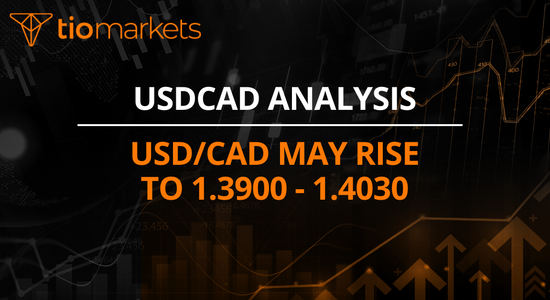Market Opportunities in Focus
BY Janne Muta
|Mart 12, 2024Here's a brief overview of last week's key market themes and what you should closely monitor this week.
US economy
In the latest employment update, supplied by the Bureau of Labor Statistics, nonfarm payrolls saw a notable increase of 275,000 jobs last month, overshadowing prior months' revisions which lowered figures by 167,000. A deeper look into the figures reveals the uptick in the unemployment rate to 3.9%, partly stemming from new entrants to the labour force who've yet to secure employment.
Simultaneously, household debt dynamics are shifting, as evidenced by Bureau of Economic Analysis data. Interest payments on varied debts, including credit cards and student loans, now roughly equal what households spend on mortgage interests.
February's employment data exceeded expectations with a 275k rise in nonfarm payrolls. Despite this, significant revisions and concerns such as increasing unemployment and decelerating wage growth hint at a less dynamic job market. Job gains were mostly in sectors with lower economic impact. With unemployment reaching 3.9% and other signs of labour market cooling, it's improbable the Federal Reserve will change its policy stance soon. However, the evolving scenario suggests a potential rate decrease by June, aligned with market expectations.
Upcoming economic reports, notably the February Consumer Price Index (CPI), remain crucial. With the CPI's year-over-year rate exhibiting variability since June 2023, inflation concerns persist. February's expected 0.4% rise could push the three-month annualized inflation rate to 3.6%. The core CPI forecast suggests a 0.3% increase, potentially the smallest year-over-year rise since May 2021.
Retail sales data for February is also anticipated, following a notable drop in January. Despite a slowing economy, recent figures on auto sales and personal income growth suggest consumer spending resilience. Expected declines in February's industrial production further highlight manufacturing sector struggles. Moreover, the Federal Reserve's cessation of new loans under its Bank Term-Funding Program marks a significant phase in its liquidity management efforts.
Central Banks
Recent remarks by Fed Chair Jerome Powell underscored the robustness of the US economy, with a nod towards an approaching readiness to lower interest rates, reflecting the strong yet gradually moderating labour market. This stance comes amid deliberations for more compelling evidence of inflation consistently moving towards the Federal Reserve's 2% objective before contemplating interest rate reductions. Presently, with inflation over the target at 2.4%, certain Fed officials argue for postponing rate cuts, awaiting further confirmation on inflation trends. Fed Governor Christopher Waller has called for additional data to ensure inflation is under control, signalling that the job market's robust performance does not immediately necessitate rate adjustments.
Expectations are tilting towards rate reductions by mid-June, as market participants forecast a total decrease of one percentage point by the end of the year. The upcoming Federal Reserve meeting is anticipated to keep the policy rate steady, suggesting it might be the zenith in the anti-inflationary stance. The consensus among officials leans towards a cautious and measured approach, seeking further indicators of a softening labour market and enduring reduction in inflation before implementing rate cuts.
Meanwhile, the European Central Bank (ECB) has adjusted its inflation outlook to 2.3% for the current year, down from a previous estimate of 2.7%, with a reduction in the 2025 forecast to 2%. The Eurozone's economic growth projection has also been revised, indicating a modest expansion of 0.6% in 2024. As the Eurozone economy grapples with stagnation extending over a year, the majority of ECB officials align with a June timeline for rate cuts, albeit some advocate for more immediate action. The Euro-area's economic stagnation in the last quarter of the previous year was attributed to a significant drop in trade, with a bleak growth forecast of only 0.6% for 2024, hinting at minimal GDP growth in the current quarter.
Stock indices
While the major indices remain in an uptrend in the weekly chart, the stock market concluded the week on a downturn. Major indices including the S&P 500, Dow Jones, and Nasdaq experienced declines. This was attributed to a mixed reaction to the latest US employment data and a halt in the momentum of the technology sector. The information technology sector saw the most significant drops, especially among semiconductor manufacturers such as Broadcom and Intel, following Broadcom's disappointing profit announcement.
US stocks
Taiwan Semiconductor (TSM)
TSMC's shares closed at $146.37, marking a 12.48% rally surpassing both the Computer and Technology sector and the S&P 500's advances last week. The company's forthcoming earnings report is anticipated to come in at $1.29 EPS and projected revenue of $18.38 billion. Annual forecasts suggest earnings of $6.17 per share and $85.41 billion in revenue, indicating significant growth.
Target (TGT)
Target rallied 10.75%, closing at $169.72. Income investors prioritize dividends for consistent cash flow. When a dividend stock gains substantially, it could be a sign that investors feel they need to diversify from momentum stocks to something more defensive. Target, based in Minneapolis, operates within the Retail-Wholesale sector. Its shares have appreciated 18.37% this year, offering a 2.61% dividend yield, surpassing the industry and S&P 500 averages.
Nvidia (NVDA)
Nvidia closing the week at $875.23 (+9.41%) stands out in the stock market for its substantial momentum. The company is positioned well to benefit from the AI-boom and has continued to attract institutional fund inflows. JPMorgan's analysts believe that Nvidia together with the other top tech stocks, known as the Magnificent Seven (Alphabet, Amazon, Apple, Meta Platforms, Microsoft, Nvidia, and Tesla), are trading at lower-than-average prices compared to their past five-year performance. However, traders should exercise caution and consider the volatility inherent in the tech sector. Economic uncertainties and regulatory challenges could impact Nvidia's and the Magnificent Seven's future performance, potentially affecting their stock prices negatively.
Gold and Oil
Gold prices surged to a record high, propelled by expectations of US monetary policy easing, substantial purchases by central banks, and increased demand for safe-haven assets. The spot price of gold peaked at $2,164.09, as US gold futures moved higher. The rising probability of a Federal Reserve rate cut in June has further enhanced gold's allure, as lower interest rates diminish the opportunity cost of holding non-yielding assets like gold and contribute to a weaker dollar. This, along with persistent geopolitical tensions, bolsters gold's status as a preferred safe-haven investment. Meanwhile, other precious metals like silver and platinum recorded gains, though palladium saw a slight decline following a previous rally.
Oil prices experienced a downturn, ending the week with losses. Both Brent crude and West Texas Intermediate (WTI) fell due to concerns over subdued demand from China and despite OPEC+ extending supply cuts. Brent crude futures dipped by 1.1% to $82.08 a barrel, and WTI decreased by 1.2% to $78.01 a barrel, reflecting weekly declines of 1.8% and 2.5%, respectively. The cautious economic outlook from China and its impact on demand, coupled with geopolitical tensions in the Middle East and concerns over global demand recovery, influenced the market's sentiment. OPEC+'s production cuts aim to tighten the market, but the interplay of increasing production and potential rate cuts in the US and EU continues to shape oil demand and market dynamics.
Trading Opportunities in Focus
- Gold is often believed by traders as a safe haven and inflows could support the market further. With gold prices soaring due to expectations of US monetary policy easing, central bank purchases, and strong demand for safe-haven assets, gold remains an attractive market. The prospect of a Federal Reserve rate cut in June has been adding to gold's appeal. However, beware of potential pull-backs in the price if the Fed signals the rates are likely to stay higher for longer.
- The oil market could be a real trader’s market. The recent downturn in oil prices, influenced by concerns over subdued demand from China and geopolitical tensions, suggests more volatility could be ahead in the oil sector. While OPEC+ efforts to extend supply cuts aim to tighten the market, the uncertain demand outlook and potential impacts of global economic policies warrant trade ideas for both sides of the market.
- Look for volatility trading opportunities in technology Stocks. Nvidia and the other “Magnificent Seven” tech stocks are trading at lower than their average prices over the past five years and could see relatively high volatility in the coming weeks and months.
- Monitor Retail Sector Stocks for Trade Opportunities. Target's significant rally and its strong dividend yield, compared to the industry and S&P 500 averages, highlight the retail sector's potential for income investors. The resilience shown by Target suggests that select retail stocks could offer both growth and income, especially those with a strong dividend history and potential for price appreciation.

Risk disclaimer: CFDs are complex instruments and come with a high risk of losing money rapidly due to leverage. You should consider whether you understand how CFDs work and whether you can afford to take the high risk of losing your money. Never deposit more than you are prepared to lose. Professional client’s losses can exceed their deposit. Please see our risk warning policy and seek independent professional advice if you do not fully understand. This information is not directed or intended for distribution to or use by residents of certain countries/jurisdictions including, but not limited to, USA & OFAC. The Company holds the right to alter the aforementioned list of countries at its own discretion.
TIOmarkets offers an exclusively execution-only service. The views expressed are for information purposes only. None of the content provided constitutes any form of investment advice. The comments are made available purely for educational and marketing purposes and do NOT constitute advice or investment recommendation (and should not be considered as such) and do not in any way constitute an invitation to acquire any financial instrument or product. TIOmarkets and its affiliates and consultants are not liable for any damages that may be caused by individual comments or statements by TIOmarkets analysis and assumes no liability with respect to the completeness and correctness of the content presented. The investor is solely responsible for the risk of his/her investment decisions. The analyses and comments presented do not include any consideration of your personal investment objectives, financial circumstances, or needs. The content has not been prepared in accordance with any legal requirements for financial analysis and must, therefore, be viewed by the reader as marketing information. TIOmarkets prohibits duplication or publication without explicit approval.

Janne Muta holds an M.Sc in finance and has over 20 years experience in analysing and trading the financial markets.
Related Posts
Trade responsibly: CFDs are complex instruments and come with a high risk of losing all your invested capital due to leverage.



